INVESTIGATING MURDER MOST FOUL: Part 2 Sidetracks &; Detours Dylan week with Steve Bewick &; Norman Warwick
INVESTIGATING MURDER MOST FOUL
Norman Warwick & Steve Bewick examine the epic Dylan track
It might seem surprising that the names of so many jazz artists have been brought in for questioning about a Murder Most Foul, the song in which Bob Dylan seeks to identify why the assassination of John F Kennedy was plotted and planned by whom. He seems to suggest that maybe Kennedy just happened to be the centre of a ´perfect storm´, and that might well be why so many, pop, rock, blues and jazz are included in his lyric as music was certainly a contributory factor to what was certainly a stormy twentieth century. I´m not sure I know enough about the jazz artists mentioned to fully understand their contribution to the storm, so I´ve asked Steve Bewick for help. As regular readers will know, Steve is a presenter of the Hot Biscuits jazz programme on FC – Radio.
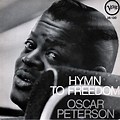
Well, most of the jazz artists mentioned in Dylan´s song are not introduced until its final movement, and of the first jazz artists mentioned is Oscar Emmanuel Peterson. He was born August 15, 1925 died in December 23, 2007 was a Canadian jazz pianist, virtuoso and composer. He was called the “Maharaja Of The Keyboard” by Duke Ellington, but simply O.P. (for Oscar Peterson) by his friends.
He is considered one of the greatest jazz pianists, and played thousands of concerts worldwide in a career lasting more than 60 years.
He released over 200 recordings, won eight Grammy Awards, and received numerous other awards and honours but as with many artists Dylan does not associate him with any particular track. That allows me to select Night Train as the opener to our Sidetracks, Detours & Hot Biscuits playlist. Night Train, written by Billy Strayhorn was always a personal favourite of mine.
Let´s hear Night Train, written by Billy Strayhorn, played by Oscar Peterson.
Given the impact of jazz on twentieth century I suppose its understandable that he lists so many jazz artists in Murder Most Foul, and we can see, too, why so many big name pop stars are there too. Pop music, jazz, blues and country gave the century its soundtrack so they are all represented in the song. There are also one or two names many people will consider to be simply footnote in all this, but obviously artists who might mean very little to most people remain important to some. Before Robert Zimmerman became Bob Dylan he played for a short time and played with Bobby Vee´s band.
To most of our generation, (I am quite proud to call myself a sexagenarian), Bobbie Vee is remembered only vaguely for throwaway hits like Suzie Baby, on which Elston Gunn, aka Bob Dylan, played, as well as novelty tracks like Rub A Dub
A filmed recording of a 2013 concert by Dylan in St. Paul, Minnesota catches him addressing his audience and telling them he had lived there a while back, and since that time, had played all over the world, with all kinds of people, from Mick Jagger to Madonna and everybody around and in between. He then spotlighted Bobby Vee in the audience and introduced him to the rest of the crowd as the most beautiful person he had ever shared a stage with.
For his part, Bobby Vee, has put on record in various interviews his memory of how Dylan ´played pretty good, … in the key of C.´
According to Dylan, ´Vee had a metallic, edgy tone to his voice and it was as musical as a silver bell´, so let´s have a listen to the Rub A Dub song that Dylan refers to and see if we can hear that bell ring a ding.
This is a track I loved as a kid. Play Rub A Dub by Bobby Vee
Stan Getz was born Stanley Gayetski; in February 2, 1927 through to June 6, 1991 was an American Jazz saxophonist. Playing primarily the tenor saxophone, Getz was known as “The Sound” because of his warm, lyrical tone, his prime influence being the wispy, mellow timbre of his idol, Lester Young
Coming to prominence in the late 1940s with Woody Herman´s big band, Getz was described by critics as ´one of the all-time great tenor saxophonists´. Stan Getz performed in bebop and cool jazz groups. He was highly influenced by Joao Gilberto and Carlos Jobin, and he popularized bossa nova in America with the hit single The Girl from Ipanema, a favourite of yours Norman, I believe. But I prefer this version as a long standing favourite from the film by the same name and written by Bob Brookmeyer, Misty. Play misty for me Norman!
Forrest Richard Betts was born December 12, 1943, known as Dickey Betts, was an American guitarist, singer, songwriter, and composer best known as a founding member of The Allman Brothers Band.
Early in his career he partnered with Duane Allman, introducing melodic twin guitar harmony and counterpoint which rewrote the rules for how two rock guitarists can work together, completely scrapping the traditional rhythm/lead roles to stand toe to toe. Following Allman’s death in 1971, Betts assumed sole lead guitar duties during the peak of the group’s commercial success in the mid-nineteen seventies. This is Dicky Betts with The Allman Brothers playing Nothing But Blue Sky, at Bob’s behest.
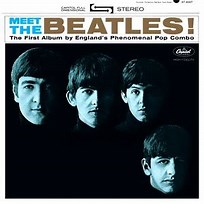
Not only does the litany of artists somehow make such perfect sense in Murder Most Foul, but whenever particular tracks are referenced they each seem so appropriate.
Of course no sixties pop music discography would be complete without The Beatles, but Dylan not only names the group but also chooses a song that fits his own narrative so well. I Wanna Hold Your Hand is a song that perfectly epitomises the impact the group had on America, being one of the several singles by them which all hit the Billboard charts at the same time. In its nature, the song is sweet and relatively innocent and reflects much of the carefree spirit of sixties America and the whole Camelot era. These, though, were also days of the cold war and of the fear factor brought about by the Cuban missile crisis that had the world fearfully huddled together under a notional nuclear bunker. Little Childrem, (another Beatles song title recorded by Billy J Kramer And The Dakotas) would whisper to their parents. I Wanna Hold Your Hand, so let´s play that track.
Dylan then calls to the court, to give evidence, Arthur Edward Pepper Jr. Art, as he became known to all, was born September 1, 1925 and lived till June 15, 1982. He was an American alto saxophonist and very occasional tenor saxophonist and clarinettist. A long time figure in West Coast jazz, Pepper came to prominence in Stan Kenton’s big band. He was known for his emotionally charged performances and several stylistic shifts throughout his career, and was described as the world’s great altoist by the time of his death. Let´s hear a version of Dianne that he recorded with Shelly Manne.
Another Merseyside group who had a huge success in the States in the sixties was Gerry And The Pacemakers. Again, in referencing them Dylan chose a song that added further shades to the mosaic he created in Murder Most Foul, a track of word play disguising deep and disturbing myths.
Its almost impossible to listen to Ferry Cross The Mersey in this context without thinking of the mythical significance of The River Styx. Of course, we might also think of a Penny Per Person Per Trip by Stanley Holloway or even Don´t Pay The Ferryman by Chris De Burgh. Not sure Dylan wants us to do that, though, so let´s hear the song he has chosen. This is Ferry Cross The Mersey by Gerry And The Pacemakers
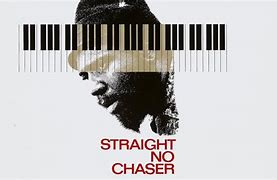
When Dylan refers to Thelonious Sphere Monk he is speaking of a man who lived from October 10, 1917 to February 17, 1982 and who was an American jazz pianist and composer. He had a unique improvisational style and made numerous contributions to the standard jazz repertoire, including Round Midnight, Blue Monk, Straight, No Chaser, (a title that became the name for one of today´s leading ac appella groups), Ruby, My Dear, In Walked Bud, and Well, You Needn’t. Monk is the second-most-recorded jazz composer after Duke Ellington, which is particularly remarkable as Ellington composed more than a thousand pieces, whereas Monk wrote about seventy.
Monk’s compositions and improvisations feature dissonances and angular melodic twists and are consistent with his unorthodox approach to the piano, which combined a highly percussive attack with abrupt, dramatic use of switched key releases, silences, and hesitations. His style was not universally appreciated; the poet and jazz critic Philip Larkin dismissed him as “the elephant on the keyboard”.
What a tribute, but an accurate one.
Here I would choose, Well, You Needn’t, which, here, he plays with Charlie Parker on saxophone. This reinforces the link with which Dylan binds Pepper, Parker and Monk. In actual fact, the three never did record or play together and they actually displayed quite different jazz temperaments. Let´s play Well You Needn´t by Thelonius Monk.
Of course one of the most significant mass gatherings during peace time in the twentieth century was for the festival of Peace and Love that was Woodstock, so naturally Dylan mentions it in these lyrics. However the whole format of the lyrics and their delivery seems to suggest the volatility of the times, and in a virtually adjacent line he also mention the huge Altamont concert by The Rolling Stones that saw an explosion of violence leading to the deaths of fans in the crowd. We´ll take the easier option here, though and play Joni Mitchell´s blissful ode to an audience ´half a million strong´ at Woodstock. And because Dylan also refers to the Age Of Aquarius, when people believed, albeit only briefly, that everything had fallen into alignment we´ll follow that with The Age Of Aquarius by the Original Cast Of Hair, another cunning reference from Dylan, this time of a musical that seemed to cause such controversy in a blast of noise, because of shock, horror, full frontal nudity on stage but which today looks positively innocent. We´ll play Joni singing Woodstock and then follow it immediately with Age Of Aquarius
Dylan references Nature Boy, a song we know was originally done by Count Basie who, interestingly, does not get a mention. Why, not Mr Dylan? Basie´s was a much better version in my humble opinion and I´m surprised that Dylan might rate this over the Counts version.
Nathaniel Adams Coles lived from March 17, 1919 to February 15, 1965, ánd became known professionally as Nat King Cole, an American singer and jazz pianist. He recorded over one hundred songs that became hits on the pop charts.
His trio was the model for countless small jazz ensembles that followed. Cole also acted in films and on television and performed on Broadway. He was the first African-American man to host an American television series. He was the father of singer/songwriter Natalie Cole (1950-2015 and we can listen now to his version of Nature Boy.
As Dylan takes this vivid look back at the twentieth century America, we re-visit the depression, prohibition, organised crime, renowned criminals and even the Robin Hood like figures such as Pretty Boy Floyd. How strange that name should re-occur this summer of 2020 and lead to the rise of the Black Lives Matter. Dylan could surely not have envisaged that, but the coincidence is weird. I bought the single of Pretty Boy Floyd by the Byrds, which was on the flip side in the UK, I think, of I am A Pilgrim. It was also included in the seminal albums Sweethearts Of the Rodeo.
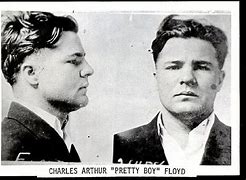
Charles Arthur Floyd (February 3, 1904 – October 22, 1934), nicknamed Pretty Boy Floyd, was an American bank robber. He operated in the West and Central states, and his criminal exploits gained widespread press coverage in the 1930s. He was pursued and killed by a group of Bureau of Investigation (BOI) agents led by Melvin Purvis.
Historians have speculated as to which officers were at the event, but accounts document that local officers Robert “Pete” Pyle and George Curran were present at his fatal shooting and also at his embalming. Floyd has remained a familiar figure in American popular culture, sometimes seen as notorious, other times portrayed as a tragic figure, even a victim of the hard times of the Great Depression in the United States.
This song about the ´outlaw´ was written of course, by Woody Guthrie, of whom Dylan was so enthralled. The version I have chosen to play here, though, is by Ramblin´ Jack Elliot, another of the Guthrie ilk and also an acolyte of Dylan´s.
Of course there are some songs titled here in Dylan´s lyrics that he doesn´t attribute to the writers or even to any particular artist.
Although Cry Me A River, written by Arthur Hamilton has been recorded in several genres it has certainly become something of a jazz standard and has been recorded by jazz greats such as Ella Fitzgerald.
However, I have selected a version that became a hit in the UK for Julie London because it’s quite different from the regular single and really adds something special with her soulful breathy vocals. So sad! And who on earth is playing that jazz guitar? Exquisite!
Dylan has so cleverly chosen songs that not only became synonymous with the 20th century but which also bestowed titles or phrases that became new linguistic shorthand throughout the English speaking world. Hence, when Elvis Presley sang about that Long Black Limousine, we knew what he meant, though the song was written by ´country´ writers Vern Stovil and Bobby George. Presley recorded the track on his iconic Elvis In Memphis album in 1969 but the track had already been recorded by Bobby Bare, Glen Campbell and Merle Haggard and there would be subsequent recordings by the likes of The Flying Burrito Brothers, The Grateful Dead and Rattlesnake Annie.
This, nevertheless, gives us the opportunity to refer again to a Rochdale based artist who has been recently featured in Sidetracks & Detours but also on-line and in print by our sister outfit in the UK; all across the arts. We´ll play Long Black Limousine by Barb Jungr and at the same refer our audience to her web site of
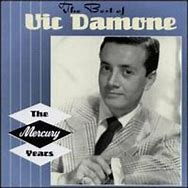
Vic Damone was born Vito Rocco Farinola. He lived from June 12, 1928 to February 11, 2018. He was an American traditional pop and big band singer, actor, radio and television presenter, and entertainer.
He is best known for his performances of songs such as the number one hit You’re Breaking My Heart, and other hits like On the Street Where You Live (from My Fair Lady) and I Have But One Heart.
Dylan doesn´t directly name Vic Damone and with so many other covers of this song around, I am perhaps a bit surprised you have actually specifically asked me about this one.
That was a song my dad used to sing around the pubs when I was a kid, and he loved Vic Damone, and I often find myself singing it to myself when I´m in a good mood. Like all the songs Dylan brings us in this lyric, Street Where You Live is a great piece of music, and so is my next play, which is Crazy by Patsy Cline and written by the wonderful and still very relevant Willie Nelson. This is just a song that every time I hear it I feel the whole world is familiar with it.
As you said earlier, Norm, it is amazing how many of the songs in this list on Murder Most Foul became standards in more than one style of music. You know I have featured musician and producer John Ellis, on my jazz radio show, Hot Biscuits, and that you and I have featured him here very recently in Sidetracks & Detours. I have his album at home, and I think you do, too of Tales From The Irk and it features this next track, which I know has also become a blues classic over the decades. Who the song was written by nobody seems to know, its one of those blues that seems shrouded in mystery, but it was Louis Armstrong who first recorded it in 1928, and I certainly think of him as a jazz artist. So I do, too, of John Ellis so there´s two jazz associations with a song that we think of as being owned by the blues.
Yeh and yet I think of it, too, as on recordings by Robert Johnson, embedding it in the blues, but I know I also have copies of it by Van Morrison, Tom Jones and Jools Holland and Hugh Laurie.
Okay, you know I like a challenge Norm, and that I never leave a job half-done. So, another bit of research confirmed St. James Infirmary Blues is an American blues song of uncertain origin. Louis Armstrong made the song famous in his 1928 recording on which Don Redman was credited as composer. The song was later released under the name Joe Primrose, a pseudonym of Irving Mills. The melody is 8 bars long, unlike songs in the classic blues genre, where there are 12 bars. It is in a minor key, and has a 4/4 time signature, but has also been played in 3/4. One point for the Jazz Man. That makes it your turn to buy coffee Norman. Ok, so categorise this then. Let´s hear St. James Infirmary Blues done Satchmo style.
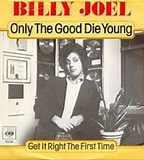
Because the title of this next song, Only The Good Die Young, is such a well-known title and a phrase in such everyday use, I was a bit surprised that my research took me ´only´ to Billy Joel as its writer. Although I love his good, punchy sing-along stuff, I never really think of him as a song writer. Its interesting this song is here, though, and it might even be more than coincidence that Billy Joel has himself written in this same style of Litany as Dylan does on Murder Most Foul.
Only The Good Die Young was released as a commercial pop song, at a time when Joel described himself as ´not exactly anti-catholic. but certainly pro-lust´ and the song rode a wave of notoriety for a long while.
However, listening to it again now I can imagine We Didn´t Start The Fire as being anticipatory of the rap art form that Dylan has re-framed here. For now, though, let´s have a listen to the song we think Dylan is referencing. This is Billy Joel explaining why Only The Good Die Young.

My next choice is again, primarily considered to be a blues song, written by Ellington Jordan but co-credited to Billy Foster and Etta James. It was first recorded by Etta James in 1967 and released in 1968.
It sounds a lot older than that, I feel, but whatever its age It is now widely regarded as a blues and soul classic. Other songs in Etta James repertoire have occasionally found their way on to my jazz playlists, though, and if you have a listen you can tell me whether you think I´d Rather Go Blind by Etta James fits my show.

I love that song but I´d agree with you that I would have pegged it at being written long before the sixties. My favourite version of the song, I think, is by Christine Perfect nee McVie nee Perfect. She used to sing it with it Fleetwood Mac and before them with Chicken Shack, and there are a couple of recorded versions knocking about.
This next title was included by Dylan, we might think, to comment on the race struggles in the States over the last hundred years. It’s got all the ingredients of Dylan´s selections for Murder Most Foul. Because it’s about a murder most foul, and because the folkies will claim it as their song and early skifflers will lay claim to it, too.
In fact it is a song about a person who actually existed under the slightly different name of Thomas C Dula. (June 22, 1845 – May 1, 1868.). This man, who became the hero, or anti-hero, of the ballad was a former Confederate soldier who was convicted of murdering Laura Foster. National publicity from newspapers such as The New York Times turned Dula’s story into a folk legend. Although Laura was murdered in Wilkes County, North Carolina, Dula was tried, convicted, and hanged in Statesville. (site is shown above)
Considerable controversy surrounded the case. In subsequent years, and the folk song was written (entitled “Tom Dooley“, based on the pronunciation in the local dialect), and many oral traditions were passed down, regarding the sensational occurrences surrounding Laura Foster’s murder and Dula’s subsequent execution.
It should also be remembered that there was a hit recording by UK sniffle artist Lonnie Donegon at round about the same time but I have chosen the version that The Kingston Trio recorded of the murder ballad in 1958-
Dylan also references Lord, Please Don´t Let Me Be Misunderstood, which many readers and listeners will associate with The Animals, but I insist that we listen, instead, to a version recorded by Nina Simone. I don´t think we should impose those Geordie blues pretenders on to our audience.The clue to the song´s genre is given in the title of Simone´s album on which it was included. Broadway-Blues-Ballads is an album by singer/pianist/songwriter Nina Simone. It was her second album for Philips. In contrast to her first Philips album, the live In Concert, which was politically laden with civil rights motifs, this studio album is more playful.
It is not regarded as one of Simone’s best efforts, though it contains songs that became standards in her repertoire. If, indeed, it was Nina Simone that Dylan really intended us to identify with this song it allowed him to include a woman with a strong social conscience and who was a campaigner for racial equality. Let´s us listen to what she has to say
I´m pretty ashamed to say I don´t think I´ve ever heard that track, and certainly not that album by Nina Simone. It´s interesting that as we reach the end of this Bob Dylan lyric that many feel is a kind of chaotic history of the last century, there might seem to be a growing weariness on the part of the singer. Does he seem to us to be suddenly looking back on that past from a slightly different perspective. Johnny Cash is referenced now and we all remember the sagacity and profundity of his last handful of albums. Here we have his version of The Old Rugged Cross, giving us at least something to hold on to.
As we remember that Mystery Train was also the title of an erudite study of rock music and social commentary by Greil Marcus, we seem to ride that Mystery Train through Dylan´s lyric, from certain faith to uncertain myth. This is a train that is still running.
Written and first recorded by Junior Parker with his band, The Blue Flames, in 1953, the song was a famous Sun studio production by Sam Phillips. The song, decades later, inspired Robbie Robertson, of Dylan´s group, The Band, to write additional and complementary lyrics. Furthermore, a film, Mystery Train, was released theatrically by Orion Classics under a restricted rating in the United States, where it grossed over $1.5 million. It enjoyed critical acclaim on the film festival circuit, and like earlier films by director Jim Jamusch, was perhaps better loved by the critics than the general public. The film premiered at the New York Film Festival and was shown in competition at Cannes, where Jamusch was awarded the Best Artistic Achievement Award.
The film was also shown in the Edinburgh, London, Midnight Sun, Telluride, and Toronto film festivals, and was nominated in six categories at the Independent Spirit Awards. Critical reaction was overwhelmingly positive, with reviewers praising the structure, humour, and characters of the film, though there was criticism that the director had not been sufficiently adventurous in his telling of a ´cultural journey´.´
Elvis recorded the most famous version of the song, perhaps, and although it was only released as a b side of I Forgot To Remember To Forget his version of the song was many years later ranked in the top hundred Greatest Songs OF All Time by Rolling Stone magazine. Presley´s version, like Junior Parker´s, had been recorded at the famous Sun Studios but, although the song has also been recorded by luminaries such as Springsteen and Paul Simon we´ll listen here to that original by Little Junior´s Blue Flames.
And now we come to my favourite track on this compilation. As I noted Dylan´s references to Lindsey Buckingham and Stevie Nicks, the couple and not a couple that created a new Fleetwood Mac sound,
I remembered that my hero John Stewart had recorded his own chart hits with these two in the studio with him. When he heard that Lindsey was thinking of splitting with Stevie, and going solo without Fleetwood Mac, John Stewart wrote a song for the friend he called Liddy Buck, imploring him by its very title not to Tear Down The Sky For A Star. This might even be what Dylan is begging of the world, in his study of the twentieth century in seventeen and a half minutes! So let´s have a listen, here, to John Stewart´s wonderful Tear Down The Sky Liddy Buck
Harry Haag James was born March 15, 1916 till July 5, 1983 was an American musician who is best known as a trumpet-playing band leader who led a big band from 1939 to 1946. He broke up his band for a short period in 1947 but shortly after he reorganized and was active again with his band from then until his death in 1983.
He was especially known among musicians for his technical proficiency as well as his tone, and was influential on new trumpet players from the late 1930s into the 1940s. He was also an actor in a number of films that usually featured his band. Here he is with Stella by Starlight.
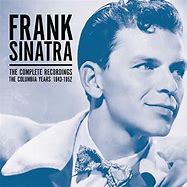
That melody had originated as a recurring theme in Victor Young’s musical score for the acclaimed 1944 Paramount mystery/ghost story “The Uninvited.” It was given the title “Stella by Starlight” in 1946 along with a set of Ned Washington lyrics popularized in a Frank Sinatra recording:
But here is the old crooner on that Old Devil Moon as mentioned by Mr Dylan alongside Misty. Why, I am left pondering? But I do have a soft spot for Sinatra’s’ crooning, so here he is with Old Devil Moon.
Didn´t Sinatra include Old Devil Moon on that famous Songs For Swingin´Lovers album? Its interesting, if so, because that album title carried with it a certain sense of the promiscuous, didn´t it, in the nineteen sixties. The next song he mentions must have carried such connotations at the height of its popularity in the roaring twenties. You must know half a dozen great jazz versions of Anything Goes, but whilst I agree that anything goes, nothing goes better than this version of Anything Goes, by Harper´s Bazaar.
Hoagland Howard “Hoagy” Carmichael was born November 22, 1899 till December 27, 1981 following in the tradition of jazz set by his contemporary Jelly Roll he was an American singer, songwriter, and actor. American composer and author Alec Wilder described Carmichael as the “most talented, inventive, sophisticated and jazz-oriented of all the great craftsmen” of pop songs in the first half of the 20th century. Carmichael was one of the most successful Tin Pan Alley songwriters of the 1930s and was among the first singer-songwriters in the age of mass media to utilize new communication technologies, such as television and the use of electronic microphones and sound recordings. Here’s Hoagy with a more moderate offering of Memphis In June.
Dylan then referenced, in the same verse, one Ferdinand Joseph LaMothe, born October 20, 1890 and living till just July 10, 1941, known professionally as Jelly Roll Morton. He was an American ragtime and jazz pianist, bandleader, and composer. Morton was jazz’s first arranger, proving that a genre rooted in improvisation could retain its essential characteristics when notated. His composition Jelly Roll Blues, was, in 1915 one of the first published jazz compositions. Morton also wrote King Porter Stomp, Wolverine Blues, Black Bottom Stomp, and I Thought I Heard Buddy Bolden Say, the last a tribute to a New Orleans musician from the turn of the 20th century. That´s yet another name that just fell out in conversation
Here is Jelly Roll with The Murder Ballad, chosen not only because I think it’s the most gruesome song I’ve ever heard but also because it is entirely in keeping with Dylan´s overarching theme on Murder Most Foul.
The final great rock and roll song Dylan refers to in Murder Most Foul is Lucille by Little Richard but as we listen to this devil´s music let us remember that the singer of this song became a quiet man of God
Yeh, Dylan plays out his track by talking about gentler, softer, sweeter music. We´ve got a beautiful guitar version coming up of Moonlight Sonata played Michael Lucarelli, and that will be followed by Bud Powell.
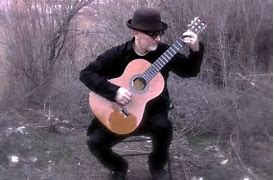
So, there we heard a classical guitarist, playing Moonlight Sonata. Michael Lucarelli performs both classical music and popular music at weddings, concerts, conventions and other events. In addition to traditional works, he has written some compositions of his own. He also teaches guitar and yoga at The University of Utah, where he received a Bachelor of Music degree.
Michael Lucarelli was born in Cincinnati, Ohio. He began his music education on the electric guitar after hearing the group Led Zeppelin. Later, Michael discovered the classical guitar and began his studies with Peruvian Guitarist Ricardo Linares. Mr. Lucarelli went on to receive his Bachelor of Music degree from the University of Utah and his Master of Music from the University of Arizona in Guitar performance.
Currently Michael lives in Holladay, UT with his wife Shahla, where he enjoys performing, recording, composing, teaching classical guitar and teaching yoga at The Yoga Centre in Holladay. Michael performs extensively for weddings, concerts, festivals, and private events throughout Utah and the U.S.
As for Bud Powel, he was really Earl Rudolph “Bud” Powell, an American jazz pianist and composer. Along with Charlie Parker, Thelonious Monk, and Dizzy Gillespie, Powell was a leading figure in the development of bebop. His virtuosity led many to call him the Charlie Parker of the piano. Powell was also a composer, and many jazz critics credit his works and his playing as having “greatly extended the range of jazz harmony.”
That mystery surrounds Mr Dylan’s reference here suits the great aesthetic, if enigmatic style, of his song, but raises the question of whether he is showing off his knowledge of jazz esoteric? Bud Powell never recorded “Love Me, Or Leave Me” as Dylan calls out for, Bud´s song Get It is based on the same chord changes.
What might just a lucky break for Bob will be interpreted by many as being Typically Dylan-esque
Here is Bud, though, with, Get It.
Then there´s this almost final reference in Dylan´s lyric that, of course, is the one I just couldn’t figure out. I had no idea at all what the phrase The Blood Stained Banner was referencing but these search engine thingies are pretty good aren´t they? And what music I found when I got there. Let´s look at the reference first, though, because it shows how so often Dylan takes us in a circle, thinking we are learning all the answers when in fact he has perhaps only been teaching us how to ask the right questions. He ends this song, Murder Most Foul, all about civil unrest, of statue defacement and flag burning with a reference to a flag that takes us right back to where we first started, questioning the nature of slavery and racial prejudice in America over a period of centuries.
The Blood-Stained Banner is a nickname given to the third and final official flag of the Confederacy. It was unveiled just weeks before Lee surrendered to Grant at Appomattox Court House, ending the American Civil War.
Murder Most Foul is the title of this new Dylan song that is so long and epic, it wraps up with a reference to itself. That we are speaking of a banner that is blood stained, not star spangled, cranks up the current tensions a little don’t you think?
Nevertheless, when t when I found this out, I also saw on the same screen, a reference to a performance of a song of this title by a group calling themselves Sweetwater Revival

That was a Female Quartet of Southern Gospel Music that is a ten time Nominee for Female Group of the Year. Based out of Minnesota their ministry has been featured on Gospel Music Television, played on Radio stations around the world, and they do make a wonderful sound. As they listen, though, our audience might like to consider whether or not, and if so, how, this song in any way closes the track of Dylan´s that is Murder Most Foul
So, I hope we are not charged as aiding and abetting a Murder Most Foul, but I do think it has already established itself as my favourite Dylan track of all time, and of course there are many other titles competing for that position. However I sent it over to you, partly because I think the lyrics are so incredibly clever, but also because I feel Dylan delivers this in a style that is not dis-similar from the road poets and beat poets you so love. Thanks for contributing so much on the jazz references in Dylan´s lyric but what do you actually think of the song.?
Dylan’s followers demand something of their hero that few other artists have to contend with. When it comes to a new recording, the tune is optional.
In its almost motionless cello and piano arrangement, the 17 minutes of “Murder Most Foul” barely qualifies as music. Refined vocals are not required. Even Dylan admits he can’t sing. But when the guru comes down from his mountain, he is expected to offer some guidance to life.

Ask Dylan himself what Murder Most Foul is about and he would no doubt answer, it’s about 17 minutes.
The interesting part for me comes understandably at the end of the song where messed in the scramble to find the what the references in this song are, we stumble over what feels like an admission by Dylan himself , that he is unable to answer his own question.
However, Norm, I know it will upset you to hear me say this, but I don’t know many more times I would have to listen to this song in search of a meaning, because I don´t think I will ever get away from the thought that it has all been done before. The practice of name dropping or name-checking is the practice of naming or alluding to important people and institutions within a conversation, story, song, online identity, or other communication.
Here’s the really bad news: ´name dropping is absolutely terrible for our credibility,” according to Liane Davey, the arts organisational psychology expert-
One study found that when someone name-drops to assert their closeness to a powerful person, they’re perceived both as less competent and as manipulative.
Consider just two examples, one by Mick Jagger and Keith Richards in Lady Jane and the other by John Lennon in God.
My sweet Lady Jane (Jane Seymour), when I see you again, your servant am I
My dear Lady Anne (Anne Boleyn), I’ve done what I can, I must take my leave
Oh my sweet Marie (Mary Shelton), I wait at your ease
God by John Lennon
I don’t believe in Hitler
I don’t believe in Jesus
I don’t believe in Kennedy (the family)
I don’t believe in Buddha
I don’t believe in Elvis (Presley)
I don’t believe in Zimmerman (Bob Dylan)
I don’t believe in Beatles
I just believe in me, Yoko (Ono) and me, and that’s reality
In both examples the writers completed their task with accuracy, making a clear point and without any pretence of mystery, although I would concede the commonality of a bit narcissism.
What worries me here is that I know all of the comments you make have a ring of truth, and could very easily be applied to me as a person and a name-dropper in both conversation and in print. I would say that whilst I may be guilty of the crime, my motives are not what Davey might assume.
I would say that in defence of Dylan, too. The question behind Murder Most Foul seems to be about why JFK was assassinated, and holds a supplementary question about what happened to the age of hope Kennedy´s presidency seemingly embodied.
After the initial darkness of the two verses recounting the assassination, the song gives way to a voice of what could be an old man at the bar, asking the pianist to play the great tunes of the twentieth century, trying to make sense of it all. Play Misty for me, and That Old Devil Moon, he pleads. Play Anything Goes and Memphis in June.
Just like the rest of us, Dylan’s looking for the answer, too.
He is one of the world´s best-known voices, a ferocious interrogator himself and also loudly prophetic- He also takes on another famous mythical persona in his narratorial voice on Murder Most Foul. He is the last guy in the bar, at quarter to three in the morning, telling the bar man a story about lost love, albeit for a woman or the world. He is making a drunkard´s sense, but seems to ask to hear songs on the jukebox that are really films, and seems to place songs and singers in a close proximity they have never enjoyed. This is a Dylan with a Sinatra smile and a slur of the words and that we accept this is a real proof of its genius. His fractured, manufactured history of the twentieth century is compelling and we are only maybe a hundred or a thousand more listens away from fully understanding it.
To be honest Norm, I refer you to my earlier answer. I don’t know how many more times I would have to listen to this song to ask what it´s all about.
I´m not sure I´m prepared to look for whatever it is he can´t be bothered to explain However, to bring the show to a close, let´s play it one more time and let our listeners and readers decide for themselves. For your delight, audience, this is Murder Most Foul by Bob Dylan.
This collection has been compiled by Norman Warwick and Steve Bewick and was brought to you by Sidetracks & Detours and Hot Biscuits Productions.
hope you enjoy this selection that is based on the lyrics of Murder Most Foul by Bob Dylan
see below for full track listing
INVESTIGATING
MURDER MOST FOUL
1 Night Train Oscar Peterson
2 Rub A Dub Bobby Vee
3 The Girls From Ipenema Stan Getz
4 Blue Sky Dickie Betts
5 I Wanna Hold Your Hand The Beatles
6 Dianne Art Pepper & Shelly Manne.
7 Ferry Cross The Mersey Gerry and The Pacemakers
8 Well You Needn´t Thelonius Monk.
9 Woodstock Joni Mitchel
10 Age Of Aquarius Cast Of Hair
11 Nature Boy Nat King Cole
12 Pretty Boy Floyd Ramblin´ Jack Elliot
13 Cry Me A River Julie London
14 Long Black Limousine Barb Jungr.
15 The Street Where You Live Vic Damone
16 Crazy Patsy Cline
17 St. James Infirmary Blues Louis Armstrong
18 Only The Good Die Young Billy Joel
19 I´d Rather Go Blind Etta James
20 Tom Dooley The Kingston Trio
21 Don´t Let Me Be Misunderstood Nina Simone
22 The Old Rugged Cross Johnny Cash
23 Mystery Train Little Junior´s Blue Flames
24 Tear Down The Sky Liddy Buck John Stewart
25 Stella By Starlight Harry James & His Orchestra
26 Old Devil Moon Frank Sinatra
27 Anything Goes Harper´s Bazaar
28 Memphis In June Hoagy Carmichael
29 The Murder Ballad Jelly Roll Morton
30 Lucille Little Richard
31 Moonlight Sonata in F Michael Lucarelli
32 Get it Bud Powell
33 Blood Stained Banner Sweetwater Revival.
34 Murder Most Foul Bob Dylan




Leave a Reply
Want to join the discussion?Feel free to contribute!